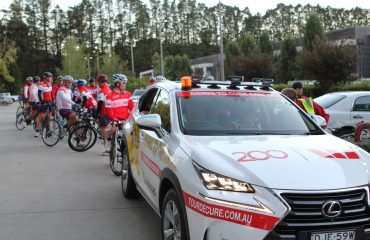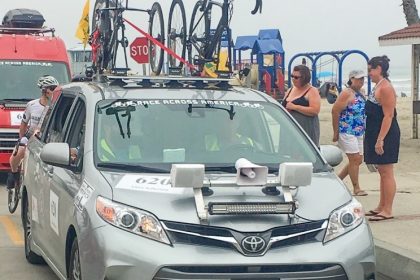
The Team Jefferson Story
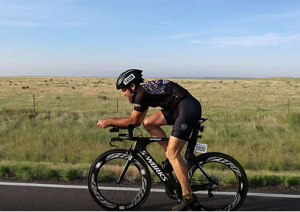 Allan Jefferson was introduced to the sport of Team Adventure Racing after been involved in running and triathlon for most of his life. He commenced his journey by getting involved in school athletics and rugby at club level. Then, in 1997 Allan watched the Hawaiian World Championships. Despite competitors collapsing due to severe dehydration Allan’s thought was “that looks like fun!”
Allan Jefferson was introduced to the sport of Team Adventure Racing after been involved in running and triathlon for most of his life. He commenced his journey by getting involved in school athletics and rugby at club level. Then, in 1997 Allan watched the Hawaiian World Championships. Despite competitors collapsing due to severe dehydration Allan’s thought was “that looks like fun!”
Fast forward to 2001, Allan competed in his first long-distance race in NZ. He went on to complete more than 35 long-distance triathlons winning several Australian and Asia Pacific age-group titles. With every race completed Allan’s knowledge of the sport expanded leading to
qualifying for the Ironman World Championships held in Hawaii (8 times with a PB placing of sixth in his age group)
Allan Jefferson and the Race Across America (RAAM)
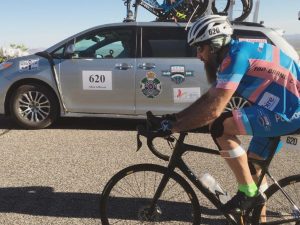 Whilst competing in an event in 2014 a competitor mentioned RAAM. Allan had not heard of it before, but it piqued his interest. He quickly discovered that RAAM racers can consist of solo riders and teams of up to 8 cyclists racing from one side of the US to the other without stopping. Whilst most people would suggest this is madness Allan’s endurance brain thought” this actually sounded like fun”.
Whilst competing in an event in 2014 a competitor mentioned RAAM. Allan had not heard of it before, but it piqued his interest. He quickly discovered that RAAM racers can consist of solo riders and teams of up to 8 cyclists racing from one side of the US to the other without stopping. Whilst most people would suggest this is madness Allan’s endurance brain thought” this actually sounded like fun”.
With this mind, Allan signed up for a strategic support crew role for the 2015 Team Australia campaign. In 2017, Allan completed RAAM in a four-person team finishing second in their category before returning in 2019 as a solo rider.
What is RAAM?
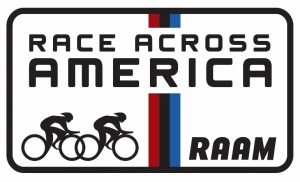 Race Across America is one of the most respected and longest-running ultra-endurance events in the world. It is seen as the pinnacle of athletic achievement not only in cycling but the greater sporting community as well. Competitors range in age from 13 to 75 and consist of amateurs and professionals from over 35 countries and six continents in the 37-year history of the race. RAAM is also an outstanding platform for raising money for charitable causes.
Race Across America is one of the most respected and longest-running ultra-endurance events in the world. It is seen as the pinnacle of athletic achievement not only in cycling but the greater sporting community as well. Competitors range in age from 13 to 75 and consist of amateurs and professionals from over 35 countries and six continents in the 37-year history of the race. RAAM is also an outstanding platform for raising money for charitable causes.
In 1982, four cyclists raced from the Santa Monica Pier, Los Angeles to the Empire State Building, New York City. As a result, it received national television coverage, and the race captivated the public’s imagination. In 1992, Relay Teams were introduced. Subsequently, this became the most popular and fastest-growing segment of the race. Team sizes are 2, 4 and 8 persons. Relay Team racing made the event accessible to any fit cyclist.
RAAM is truly unique, there is no other race in the world like it. RAAM combines distance, terrain and weather and tests a team’s spirit from beginning to end. The Race is a true team sport, inspiring everyone who has been a part of it – racer, crew, staff and fans alike. RAAM is the true test of speed, endurance, strength and camaraderie.
RAAM is no Cycling Tour
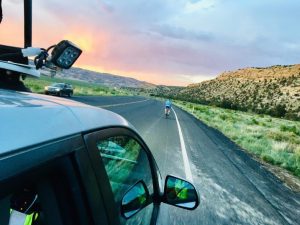 RAAM is a single non-stop race. Conversely, the great European Grand Tours (Tour De France,
RAAM is a single non-stop race. Conversely, the great European Grand Tours (Tour De France,
Vuelta a Espana and Giro de Italia) are made up of a series of smaller races or stages that start and finish on the same day. By comparison, RAAM is one continuous stage racing against the clock. It’s the world’s longest time trial…the ultimate race of speed, endurance and the truth.
In terms of distance, RAAM is 30% longer than the Tour De France yet it is completed in roughly 50% of the time with no rest days
The RAAM in detail
Competitors must cycle approx. 4,830 km across 12 states and must climb over 52 vertical kilometres. Teams are given 9 days to complete the race but most finish in about 7.5 days. To date, the fastest time has been just over 5 days. Furthermore, solo competitors are given a maximum of 12 days to complete the race with most finishing in 11 days. To date, the fastest solo competitor time was just under 8 days
About Team Jefferson
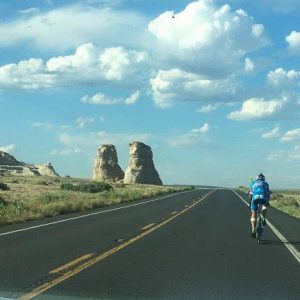 Allan has been proudly supporting beyondblue, an Australian not-for-profit organisation that is working to help every person in Australia achieve their best possible mental health. The work beyondblue does in the Police and Emergency Services area is outstanding and provides great support to the community.
Allan has been proudly supporting beyondblue, an Australian not-for-profit organisation that is working to help every person in Australia achieve their best possible mental health. The work beyondblue does in the Police and Emergency Services area is outstanding and provides great support to the community.
Team Jefferson – Having competed in the 2019 event in the solo category, Allan and the rest of Team Jefferson, consisting of 10 support crew will be joined by hundreds of other riders and support crews in June 2020 with the race commencing on Tuesday 16th. The Race starts in from Oceanside, California and ends 5000 km’s later at Annapolis, Maryland. You can follow Team Jefferson on both FaceBook and Instagram.
Why did Team Jefferson use SeaSucker Bike Racks?
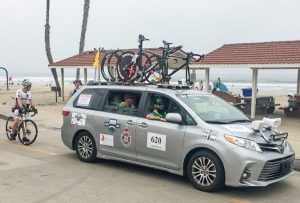 Team Jefferson investigated several different securing options before the decision was made to purchase the SeaSucker Bike Rack. Ease of use, simplicity, security and versatility were the main reasons. The Bike Rack was a simple stand-alone solution that proved to be highly effective, whilst the purchase of individual vacuum mounts enabled the team to locally manufacture a front of vehicle light/sound arrangement that was able to be easily moved between vehicles whilst training was being conducted in Australia and then simply packaged and sent to America to be utilised on the race support vehicles.
Team Jefferson investigated several different securing options before the decision was made to purchase the SeaSucker Bike Rack. Ease of use, simplicity, security and versatility were the main reasons. The Bike Rack was a simple stand-alone solution that proved to be highly effective, whilst the purchase of individual vacuum mounts enabled the team to locally manufacture a front of vehicle light/sound arrangement that was able to be easily moved between vehicles whilst training was being conducted in Australia and then simply packaged and sent to America to be utilised on the race support vehicles.
SeaSucker equipment used by Team Jefferson
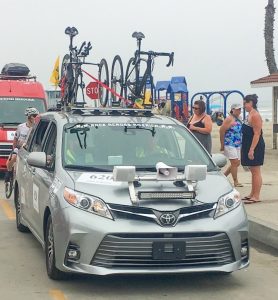 Team Jefferson used several different pieces of SeaSucker equipment, primarily the Bomber – 3 Bike Rack. We also purchased several the 114mm Vacuum Mounts and then independently manufactured a rack for our spare wheels as well as a lighting/speaker mounting system for the front of the support vehicle. We were so impressed with the SeaSucker equipment that immediately after the 2019 race, we purchased 2 x 3 – Wheel Holders to use during upcoming the 2020 race.
Team Jefferson used several different pieces of SeaSucker equipment, primarily the Bomber – 3 Bike Rack. We also purchased several the 114mm Vacuum Mounts and then independently manufactured a rack for our spare wheels as well as a lighting/speaker mounting system for the front of the support vehicle. We were so impressed with the SeaSucker equipment that immediately after the 2019 race, we purchased 2 x 3 – Wheel Holders to use during upcoming the 2020 race.
Team Jefferson’s experience using SeaSucker Bike Racks
The SeaSucker mounts proved to be a very effective way of quickly and efficiently attaching items to our support vehicles. Travelling from Australia, meant that we had limited time prior to the race to develop or built a system to suit our needs so having an off the shelf item was hugely advantageous to the team. Additionally, using hire cars, meant that we were unable to modify them in any way, so the vacuum mounting system offered by SeaSucker is a perfect solution.
Travelling the distances that were required during the Race Across America, demanded that we constantly checked the SeaSucker mounts to determine that they remained securely fastened and that the many thousands of dollars in bike and wheels remained safely secured to the vehicle. The team ensured that the vacuum mounts were checked every time the vehicle was required to stop, however in the over 5000klm that was travelled, only two of the individual vacuum mounts required adjusting. The SeaSucker mounting system proved to be a worry- and hassle-free way of transporting our bikes and at no time did we feel that the bike’s security was compromised in any way. The ease of use of the Sea Sucker system meant that there was no way that the bikes could be damaged whilst either mounting or removing them from the bike rake. We highly recommend the Sea Sucker Vacuum Mounting system for anyone looking for a simple, secure, safe and efficient way to transport bikes and wheels.

